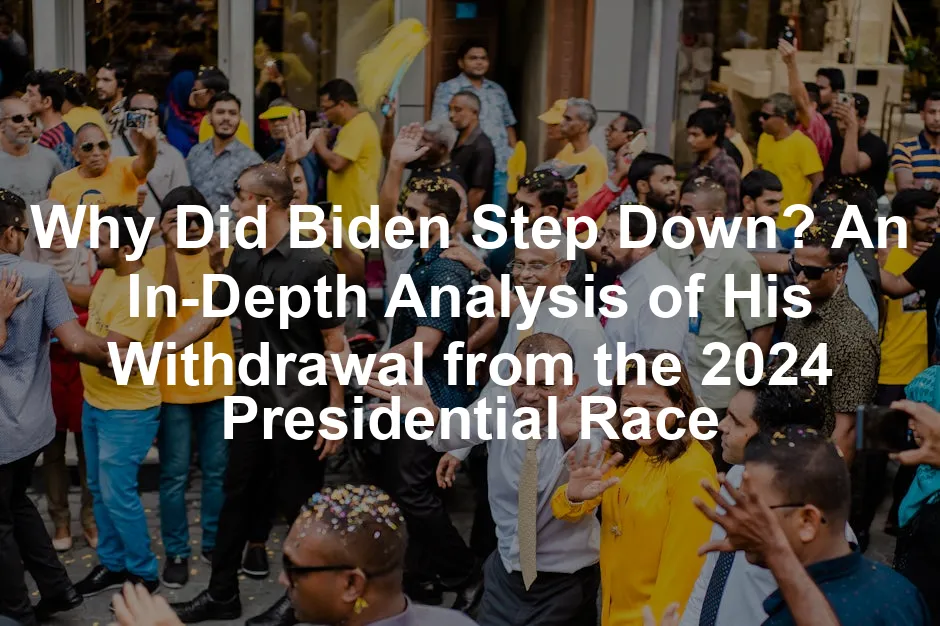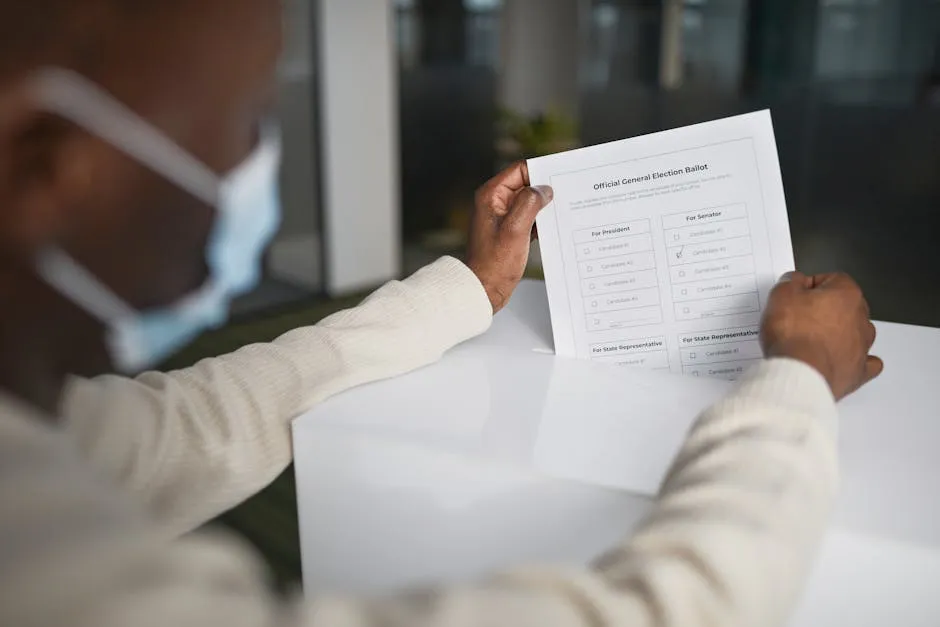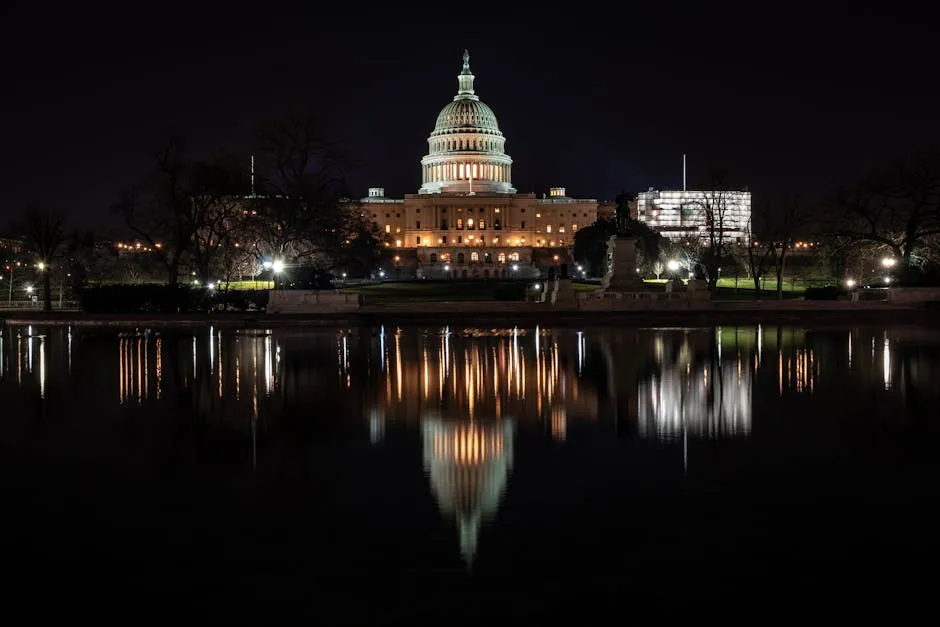
Why Did Biden Step Down? An In-Depth Analysis of His Withdrawal from the 2024 Presidential Race
Introduction
In a stunning political turn, President Joe Biden announced he would not seek re-election, igniting a whirlwind of speculation, debate, and curiosity across the nation. With a career spanning nearly five decades, Biden’s decision to step down has left many questioning what led to this unprecedented move for a sitting president. Was it his health? The pressure from party leaders? Or perhaps the daunting prospect of facing off against Donald Trump once more?
Biden’s withdrawal has implications beyond his personal ambitions. It raises critical questions about the future of the Democratic Party and its chances in the upcoming elections. The president’s age has long been a topic of discussion, and many Democrats expressed concern over his ability to lead a successful campaign against Trump, who remains a formidable opponent. Biden’s health and performance in the recent debate further fueled doubts, leading to an increasing chorus of calls for him to reconsider his candidacy.
In his first public comments following his exit, Biden emphasized the importance of uniting the party to defeat Trump. He expressed no serious health issues but acknowledged that his performance in the debates influenced public perception and party dynamics. His decision to step aside is historic, marking the first time a sitting president has withdrawn from a re-election campaign since Lyndon Johnson in 1968. This article explores the motivations and implications of Biden’s withdrawal, examining the ramifications for the Democratic Party and the upcoming election landscape.
As we unpack the complexities of Biden’s decision, it’s essential to consider the broader context. The political climate is charged with uncertainty, and Biden’s exit signals a shift in strategy for the Democrats. With the endorsement of Vice President Kamala Harris, the party now looks forward to a new chapter. The ramifications of this decision will echo throughout the political landscape, shaping the strategies of both parties as they prepare for one of the most contentious election cycles in recent history.
Understanding why Biden stepped down isn’t just about one man’s journey; it’s about the future of American democracy and the fight for the White House in 2024. The stakes have never been higher, and the upcoming months will determine how the Democratic Party mobilizes its resources and support to face the challenges ahead.

Summary of Key Points
– Historic Decision: Biden’s withdrawal marks the first time a sitting president has stepped down from a re-election campaign since Lyndon Johnson in 1968.
– Pressure from Party: An escalating chorus of Democratic leaders, including Nancy Pelosi and Chuck Schumer, urged Biden to reconsider his candidacy amid concerns about his age and debate performance.
– Endorsement of Kamala Harris: Biden’s support for Vice President Kamala Harris as his successor sets the stage for a new chapter in the Democratic campaign.
– Public and Polling Dynamics: Polls indicated growing public sentiment that Biden was not fit for another term, influencing his decision.
– Political Ramifications: The implications for both the Democratic and Republican parties are profound, as candidates scramble to adjust their strategies.
Biden’s decision to step down is a pivotal moment, reshaping the electoral landscape and igniting conversations about leadership, age, and party unity. As the Democratic Party rallies around Kamala Harris, the focus shifts to how she will navigate the challenges ahead and whether she can energize the base to mount a formidable challenge against Trump.
The Context of Biden’s Decision
Historical Background
Joe Biden’s political journey is nothing short of remarkable. From his early days in the Senate to becoming the 46th President, he has faced numerous challenges. His lengthy career spans nearly five decades, making him a seasoned politician. However, this tenure has not been without its trials. As president, Biden faced relentless scrutiny regarding his age and health. At 81, he became the oldest president in U.S. history. This scrutiny intensified as the 2024 election approached, with many questioning his capability to serve another term.
Biden’s decision to step down echoes a historical precedent. In 1968, President Lyndon Johnson withdrew from the race amid widespread discontent over the Vietnam War. His exit marked a crucial moment in American politics. Similarly, Biden’s choice to step aside signifies a pivotal shift in the Democratic Party’s strategy. The focus now shifts to the future, as party leaders seek to rally support for a new candidate.
Biden’s journey has been shaped by personal and professional setbacks. The tragic loss of his first wife and daughter in a car accident early in his career haunted him. His resilience, however, defined his political identity. He fought back from scandals and setbacks, including a plagiarism controversy during his first presidential campaign. Despite these challenges, Biden remained a prominent figure in American politics, navigating the treacherous waters of public service.

If you’re interested in the political landscape and want to dive deeper into the intricacies of leadership, consider picking up The 48 Laws of Power by Robert Greene. It’s a fascinating read that explores the dynamics of power and influence—perfect for understanding the political chess game!
Recent Events Leading Up to the Decision
Recent events significantly influenced Biden’s decision to withdraw. His performance in a June 27 debate against former President Donald Trump raised alarms within the Democratic Party. Observers noted his struggles to articulate points clearly, leading to doubts about his mental acuity. This performance amplified existing concerns about his ability to lead effectively.
Adding to the turmoil, Biden contracted COVID-19 shortly after the debate. The isolation brought on by his illness further complicated his decision-making process. As he recovered at his beach house in Rehoboth, Delaware, Biden faced mounting pressure from party leaders and donors. Many expressed fears that his candidacy could jeopardize Democratic prospects in the upcoming elections.
Biden’s struggles during the debate and subsequent health issues triggered a wave of calls for him to step aside. Prominent Democrats, including Nancy Pelosi and Chuck Schumer, urged him to reconsider his candidacy. They feared that his continued presence in the race could endanger congressional races, which are critical for maintaining a Democratic majority.
In a candid moment post-debate, Biden acknowledged that he misspoke multiple times, which did little to quell concerns about his fitness for office. The combination of a disastrous debate performance and a COVID-19 diagnosis created a perfect storm, ultimately leading Biden to conclude that stepping down was in the best interest of the party. The political landscape is now poised for a new chapter, with Vice President Kamala Harris emerging as the likely frontrunner to carry the Democratic banner into the 2024 election.

Internal Party Pressure
Voices from Within
Biden’s withdrawal from the race was not just a personal decision; it was a response to significant internal party pressure. Prominent Democrats, including House Speaker Nancy Pelosi and Senate Majority Leader Chuck Schumer, voiced their concerns about his candidacy. They emphasized the importance of presenting a strong candidate to challenge Trump and feared that Biden’s continued presence could harm Democratic prospects in key congressional races.
The growing unease within the party was palpable. At least 40 Democratic congressional members publicly called for Biden to step aside, signaling a fracture in party unity. Senator Joe Manchin, a longtime supporter, urged Biden to “pass the torch to a new generation.” This plea reflected a broader desire among party leaders for fresh leadership that could resonate with younger voters.
As the pressure mounted, Biden’s allies found themselves in a precarious position. Despite their loyalty, many acknowledged the challenges posed by Biden’s age and declining poll numbers. Polls indicated that a significant portion of the electorate believed Biden was too old to govern effectively through another term. This perception weighed heavily on Democratic leaders, who sought to maintain a competitive edge against the Republicans.
The party’s concerns were not unfounded. The specter of a Trump candidacy loomed large, and many Democrats feared that a weakened Biden could jeopardize not only his campaign but also the party’s chances in critical races across the country. As discussions intensified, Biden’s decision to withdraw became increasingly apparent, culminating in his endorsement of Kamala Harris. This endorsement marked a significant shift for the Democratic Party, setting the stage for a new candidate to lead the charge against Trump in 2024.

Biden’s Endorsement of Kamala Harris
Transition of Power
When President Biden stepped down from the race, he didn’t just exit stage left; he handed the baton to Vice President Kamala Harris. This endorsement was more than a mere gesture. It was a strategic move aimed at unifying the party and maintaining momentum against Donald Trump. Biden recognized that Harris embodies the future of the Democratic Party.
Harris, who has been a prominent figure since the beginning of Biden’s administration, is seen as a potential powerhouse in her own right. Her background as a former prosecutor and her ability to connect with various demographics make her a formidable candidate. Biden’s endorsement signaled confidence in her ability to lead, and it’s a testament to her years of dedication and hard work in the political arena.
Party leaders quickly rallied behind her. Figures like Nancy Pelosi and Chuck Schumer publicly expressed their support for Harris, emphasizing the importance of a united front. In a climate where division can spell disaster, this endorsement aimed to coalesce the party’s resources and energy around a common goal: defeating Trump in the upcoming election.
Harris’s response to Biden’s endorsement was gracious yet determined. She vowed to continue Biden’s legacy while promising to bring her unique vision to the forefront. Her commitment to uniting the party resonated with many who felt disheartened by the recent political turmoil. Harris is now poised to lead the charge, but she needs to navigate the complexities of the Democratic landscape carefully.

The potential for Harris to shape the future of the Democratic Party is immense. Her ability to appeal to younger voters, particularly with her active presence on social media, might energize a demographic that often feels disconnected from traditional politics. This could be a game-changer in the battle against Trump, who remains a polarizing figure.
However, the transition of power isn’t without its challenges. Harris will face scrutiny and pressure to prove herself capable of leading the nation. Detractors will undoubtedly scrutinize her every move, and she must work diligently to solidify her support within the party. The stakes are incredibly high, and the pressure to perform is immense.

Implications for the Democratic Party
Biden’s withdrawal has opened a new chapter for the Democratic Party, creating space for Harris and other potential candidates to emerge. Her ascendance to the forefront of the campaign signifies a shift in strategy. The party must now rally behind her to maximize their chances of success.
As Harris prepares to take the reins, she must confront several challenges. First, she will need to secure the nomination amidst potential opposition. While her endorsement from Biden provides a solid foundation, the political landscape is unpredictable. Other candidates may emerge, vying for the spotlight and the support of party loyalists.
Moreover, Harris must work to unify a sometimes fractured party. The divisions that surfaced during Biden’s campaign could rear their heads again. It’s crucial for her to engage with various factions within the party, addressing concerns and building alliances. The success of her campaign hinges on her ability to present a united front.
Public sentiment is also a critical factor. Polls indicate a mixed response to Harris as a candidate, with some voters expressing hesitance about her experience and leadership style. To solidify her position, Harris must articulate a clear vision that resonates with the electorate. Her campaign will need to focus on key issues that matter to voters, such as healthcare, climate change, and economic inequality.
Additionally, the dynamics of the race against Trump will shape her strategy. Trump’s formidable political machine will not go quietly. Harris must be prepared to counter his narratives effectively while presenting a compelling alternative to his policies. The stakes have never been higher, and the race promises to be fiercely competitive.
In conclusion, Biden’s endorsement of Kamala Harris marks a pivotal moment for the Democratic Party. It opens doors for new leadership while presenting challenges that Harris must navigate with care. The upcoming election cycle will undoubtedly test her mettle and the party’s unity, but it also offers an opportunity for rejuvenation and reinvention. As Harris steps into this vital role, all eyes will be on her to see if she can rise to the occasion and lead the Democrats into a new era.

Public Reaction and Political Ramifications
Immediate Reactions
When President Biden announced his decision to step down from the 2024 presidential race, reactions poured in from both sides of the aisle. Democratic leaders, including Nancy Pelosi and Chuck Schumer, expressed relief that Biden prioritized party unity over personal ambition. They echoed his sentiments, emphasizing the need to rally behind a candidate who could effectively challenge Trump.
In a statement, Pelosi commended Biden for his selfless choice. She noted, “His decision reflects a commitment to our values and the importance of defeating Trump.” Many Democrats saw this as a much-needed reset for the party, hoping to reinvigorate their base ahead of the crucial election.
On the Republican side, reactions were mixed. Some GOP leaders like House Speaker Mike Johnson criticized Biden, questioning his fitness to serve. Trump, ever the provocateur, seized the moment, labeling Biden as “the worst president in history.” Trump’s campaign, built on attacking Biden’s leadership, now shifts its focus to Harris.
Biden’s exit reshapes the narrative for both parties dramatically. His decision transformed the conversation from concerns about his age to discussions about potential Harris’ strengths and weaknesses. The Democrats now face the challenge of unifying behind Harris, while Republicans must recalibrate their strategies to counter a new opponent.

The Road Ahead
As Vice President Kamala Harris prepares for the Democratic National Convention, her strategy will be crucial. First, she needs to solidify her base within the party. Harris must appeal to various factions, from progressives to moderates, ensuring that everyone feels included in her vision for the future.
Fundraising will be vital for Harris, and she has already seen an uptick in support since Biden’s announcement. Democrats raised millions within hours, signaling enthusiasm for her candidacy. This momentum will be essential as she builds her campaign infrastructure.
Harris also has to address the implications of her candidacy for Trump’s campaign. Trump’s team will need to adapt their messaging to confront a candidate who brings a fresh perspective and might attract diverse voter demographics. Trump’s previous strategies focused on Biden’s age and perceived weaknesses. Now, he faces a younger, dynamic Harris, which will require a shift in tactics.
The Republican camp is likely to intensify its scrutiny of Harris, capitalizing on any missteps she makes. Trump will likely paint her as out of touch, a strategy that worked against Biden. However, Harris’s unique background and ability to connect with voters could counteract these efforts.
Overall, the coming months will be pivotal for both parties as they navigate the political landscape reshaped by Biden’s exit. The stakes are high as they prepare for a fiercely contested election, each hoping to capitalize on the shifting tides of public opinion and voter sentiment.

Conclusion
Biden’s decision to step down from the 2024 presidential race is a pivotal moment in American politics, reshaping the electoral landscape and igniting conversations about leadership, age, and party unity. As the Democratic Party rallies around Kamala Harris, the focus shifts to how she will navigate the challenges ahead and whether she can energize the base to mount a formidable challenge against Donald Trump. The coming months will be crucial as both parties prepare for what promises to be a highly competitive election cycle.
Biden’s exit from the race marks a significant shift in the political narrative. His acknowledgment of the need for a united front against Trump highlights the urgency Democrats feel as they adjust to the new reality. Harris’s endorsement by Biden signals a commitment to continuity while also suggesting a fresh direction that could resonate with voters.
As Harris steps into the spotlight, she faces the daunting task of not only maintaining the Democratic Party’s momentum but also addressing the concerns of an electorate eager for change. The transition to her candidacy offers a unique opportunity to engage younger voters and those disenchanted with traditional politics. Harris must articulate a vision that unites the party and speaks to the concerns of a diverse electorate.
For Trump and the Republicans, the path forward is equally complex. Adapting to Harris’s candidacy will require a reevaluation of their strategies and messaging. The dynamics of the race will undoubtedly shift as both parties intensify their campaigns, positioning themselves for the battle ahead.
In conclusion, Biden’s withdrawal serves as a reminder of the complexities of political leadership and the ever-changing nature of American democracy. As both parties prepare for the upcoming election, the focus will be on how effectively they can mobilize their bases and appeal to a broader electorate. The stakes are high, and the outcomes remain uncertain, but one thing is clear: the 2024 presidential race will be one for the history books.

If you want to dive deeper into the intricacies of American politics and history, check out The Federalist Papers. It’s a must-read for understanding the foundational principles of American democracy!
What were the main reasons for Biden’s withdrawal?
Biden’s decision to withdraw from the 2024 presidential race stemmed from a mix of internal party pressure and public perception. After a disastrous debate performance against Trump, concerns about Biden’s age and mental acuity intensified. Prominent Democrats, including Nancy Pelosi and Chuck Schumer, openly urged him to reconsider, fearing his candidacy might jeopardize congressional races. Biden himself acknowledged that remaining in the race could distract the party from the primary goal: defeating Trump. Ultimately, he believed stepping aside was in the best interest of both the party and the nation.
How does Biden’s withdrawal impact the Democratic Party?
Biden’s withdrawal significantly alters the Democratic Party’s dynamics. His endorsement of Kamala Harris as the presumptive nominee aims to unify the party and consolidate support. However, Harris faces the challenge of solidifying her base while appealing to a broader electorate. The pressure is on her to present a compelling vision that resonates with voters. Party leaders hope her candidacy will invigorate the base, particularly among younger voters. Yet, the party must navigate potential divisions and ensure a smooth transition to maintain momentum heading into the election.
What does this mean for the upcoming election?
Biden’s exit reshapes the political landscape for both parties. The Democrats must now pivot to Harris, who represents a new generation of leadership. Her candidacy could attract diverse voter demographics and energize the base. For Trump and the Republicans, the dynamic shifts as they prepare to face a candidate with a strong background and appeal. This transition opens the door for new strategies and adjustments in messaging, as both parties seek to capitalize on the changing tides leading up to the election.
Will Biden continue to play a role in politics after stepping down?
Despite stepping down, Biden plans to remain active in politics until his term ends in January. He has committed to supporting Harris and her campaign, aiming to bolster her chances against Trump. Biden’s extensive political experience and connections will be invaluable as he navigates the final months of his presidency. His ongoing involvement indicates that while he may not seek re-election, his influence and guidance will continue to shape the Democratic Party’s future and strategy in the upcoming election cycle.
Looking for something fun to do while you ponder the political landscape? How about picking up a LEGO Creator Expert Roller Coaster Building Kit? It’s a delightful distraction from the seriousness of politics!
Please let us know what you think about our content by leaving a comment down below!
Thank you for reading till here 🙂
All images from Pexels




